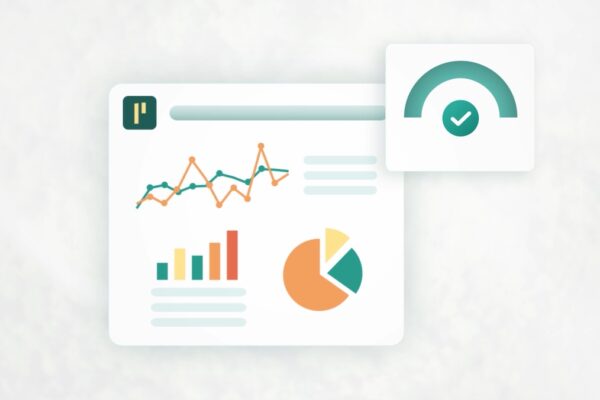CSRD Timeline – How to Prepare for Sustainability Reporting?
The Corporate Sustainability Reporting Directive (CSRD) introduces a new era of sustainability reporting in the EU. With phased implementation from 2024 to 2029, the directive affects thousands of companies—inside and outside Europe. Whether you’re preparing your first report or building long-term compliance infrastructure, this guide breaks down the CSRD timeline, deadlines by company type, and what you should do right now to stay ahead. We’ll also show you how technology (like Planmark’s CSRD tool) can simplify and automate the process.
CSRD Reporting Timeline – When is Your Company Required to Report?
| Year | Who Must Report | What They Report |
|---|---|---|
| 2024 | Large public-interest entities already under NFRD | Report on FY2024 using ESRS |
| 2025 | Large companies (250+ employees, €40M+ turnover, €20M+ balance sheet) | Report on FY2025 |
| 2026 | Same large companies (second-year reporting) | Refine and improve reporting accuracy |
| 2027 | Listed SMEs | Report on FY2026 (with opt-out until 2028) |
| 2028 | Non-EU companies with €150M+ turnover in the EU | First reporting on EU operations |
| 2029 | All categories fully under scope | Ongoing CSRD reporting embedded in strategy |
Who Needs to Comply with CSRD (and When)
CSRD applies to companies of different sizes in a phased approach. Here’s a breakdown:
- Already Reporting (NFRD companies): If you’re a large public-interest entity already reporting under NFRD, you are the first wave. Your CSRD obligations started with fiscal year 2024.
- Large Companies (New): Most large companies not previously reporting must comply in 2025, with reports covering the 2024 financial year.
- Listed SMEs: These companies have a bit more time but are still expected to comply by 2027 unless they opt for the 2028 exemption.
- Non-EU Companies: If you generate over €150 million in EU revenue and operate in the EU, you’re on the hook by 2028.
Understanding your timeline now helps ensure you build a sustainable and scalable reporting process. Good thing when using Planmark, is that you are always prepared. You have all your ESG data managed centrally and you know exactly where you stand in a scale of 0-100% compliance.
What You Should Be Doing Right Now
Regardless of your deadline, the preparation phase is critical. Here’s what proactive companies are doing (Step by Step):
- Map Out Your ESG Data: Identify where your current ESG data lives and where the gaps are. (Planmark does this automatically with your existing documentation)
- Develop a Sustainability Strategy. CSRD requires companies to analyse the environmental, social, and governance (ESG) impacts of their business operations. This calls for a strategic approach to sustainability and concrete goals.
- Double Materiality Assessment: Understand the impact your business has on the environment and how ESG issues impact your finances.
- Assign Ownership: Decide whether compliance will be led by finance, sustainability, legal, or an integrated team.
- Start Evaluating Tools: Platforms like Planmark make CSRD reporting easier with ESRS tagging, AI-generated insights, and audit-ready templates.
(Read more: CSRD Reporting Software Comparison)
- Prepare Reporting Systems and Processes. Companies must ensure that their data collection and reporting systems comply with CSRD requirements (Planmark does)
- Collect and Analyse Data. Ensure your company has the necessary data on ESG performance and use external experts if needed for analysis. Planmark platform supports importing your existing ESG documentation, and mapping it automatically in the right data points.
- Prepare for Audits and Reporting. CSRD requires sustainability reports to be verified. This means that external auditors will review company reports.
EU CSRD Timeline – The Impact of CSRD on Businesses
CSRD affects companies beyond just reporting:
- Increased transparency: Stakeholders such as investors and customers can assess corporate sustainability more accurately.
- Costs and investments: Implementing new reporting systems and collecting data may require significant investments.
- Competitive advantage: Companies that adapt quickly and leverage sustainability as a strategic asset can stand out in the market.
Frequently Asked Questions about the CSRD Timeline
Q: What is the CSRD timeline for large companies?
A: Large companies must begin reporting in 2025 for fiscal year 2024. These include those meeting two of the three criteria: 250+ employees, €40M+ turnover, or €20M+ in assets.
Q: When do SMEs have to report under CSRD?
A: Listed SMEs will start reporting in 2027, covering the 2026 fiscal year. They may opt out until 2028, but early preparation is highly recommended.
Q: Does CSRD apply to non-EU companies?
A: Yes. From 2028, non-EU companies with €150M+ turnover in the EU must comply if they have a branch or subsidiary in the EU.
Q: Can software help with CSRD reporting?
A: Absolutely. Tools like Planmark simplify data collection, ESRS tagging, version control, and audit readiness—saving time and ensuring compliance.
CSRD Compliance Timeline – Summary
CSRD introduces significant changes to corporate reporting obligations. It requires companies to provide more detailed and standardized sustainability reporting. By preparing in advance and utilizing the right tools, businesses can efficiently manage their reporting obligations while strengthening their sustainability strategy.
If your company needs support in preparing for CSRD reporting, consult experts – timely preparation brings clear competitive advantages! We also provide free pilot periods if you want to see how AI can revolutionize your CSRD reporting (Contact Us)


